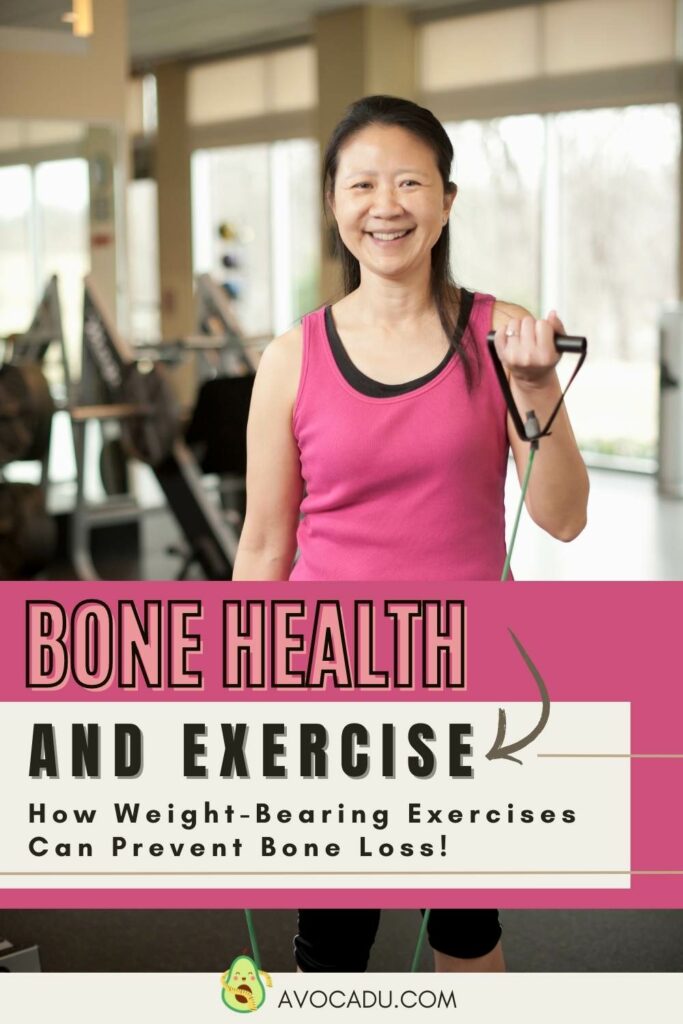Building Strong Bones: Weight-Bearing Exercises for Women’s Bone Health
Have you ever thought about the strength of your bones? It might not be the first thing that comes to mind when you think about health, but your bones play a crucial role in your overall wellness.
For us women, it’s especially important because we are at a higher risk for conditions like osteoporosis.
The good news? One significant way to improve women’s bone health is through weight-bearing exercises, and we’re here to guide you on this journey.
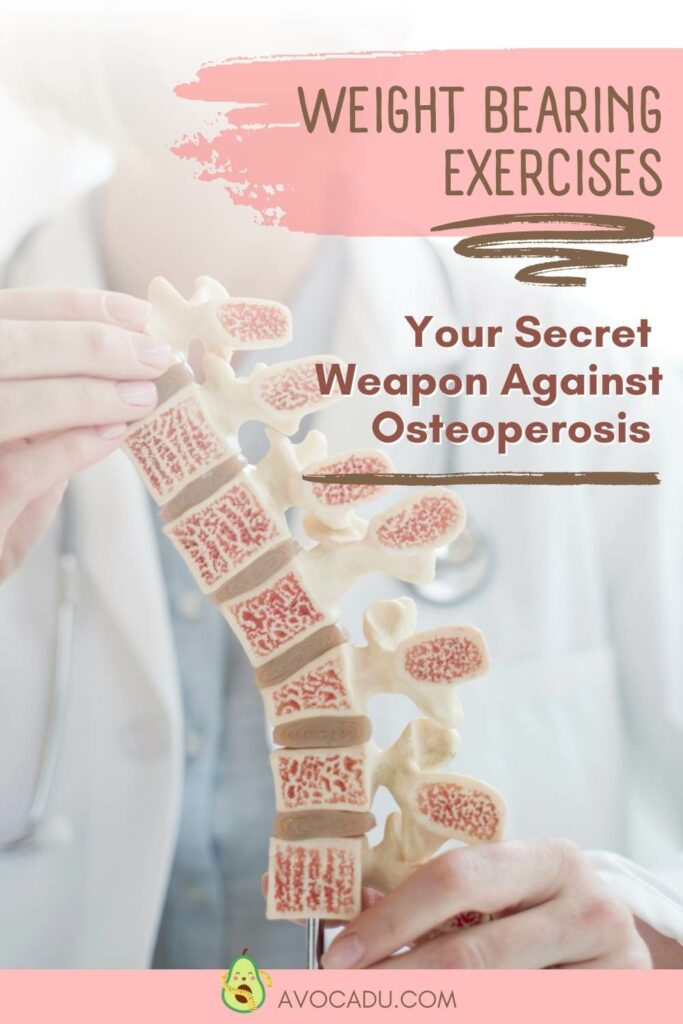
This post may contain affiliate links, which helps keep this content free. Please read our disclosure for more info.
Understanding Bone Health in Women
Just like the sturdy framework of a house, your bones are the supportive structure for your body. They do so much more than just help us stand upright and move.
They shelter our organs, provide attachment points for muscles, produce blood cells, and act as a vital storage space for calcium – an essential mineral that helps with a myriad of bodily functions, including maintaining a healthy heartbeat and enabling our blood to clot.
However, when it comes to women’s bone health, we have some unique challenges.
Our bones tend to be smaller and thinner than men’s. Plus, the hormonal changes we undergo during our lifetime significantly affect our bone density.
From puberty to menopause, the hormone estrogen plays a pivotal role in our bone health. It helps regulate the bone remodeling process – a continuous cycle where old bone is removed and new bone is created. This ensures our bones stay strong and resilient.
But as we age, particularly when we reach menopause, our estrogen levels dramatically decrease. This reduction slows down the bone remodeling process, leading to a higher rate of bone loss.
Over time, this can cause our bones to become thinner, weaker, and more porous – hence, we become more susceptible to fractures.

Conditions like osteoporosis and osteopenia – which refer to decreased bone mass and weakened bones – are more common in women than in men.
Osteoporosis, in particular, can be a silent disease, showing no obvious symptoms until a bone break occurs. That’s why it’s known as the “silent thief.”
All this might sound a bit intimidating, but don’t worry. Understanding these challenges empowers us to take proactive steps in maintaining and improving our bone health.
And one of the most significant, science-backed ways to do this? You guessed it – weight-bearing exercises.
The Science Behind Weight-Bearing Exercises and Bone Health
You’ve probably heard the term ‘weight-bearing exercises’ before, but let’s take a moment to understand what it really means.
At the most basic level, weight-bearing exercises refer to any physical activities that require you to work against gravity while staying upright.
That could be anything from a gentle walk in the park to a high-energy Zumba class, lifting weights at the gym, or climbing stairs at home or work.

The magic of these exercises lies in how they interact with your body. Picture your bones as living, breathing entities. Just like your muscles, they respond to the demands you place on them.
When you engage in weight-bearing activities, your body needs to bear more weight, which means your muscles need to work harder.
This increased muscle action tugs and pulls on your bones, sending a signal that they need to up their game.
Here’s where the real magic happens. Your bones respond to this increased demand by producing more osteoblasts – the cells responsible for creating new bone material.
As these cells get to work, they lay down fresh layers of bone tissue, thereby increasing your bone mass. This process not only makes your bones stronger but also denser, which makes them less likely to break.
Guidelines for Weight-Bearing Exercises
As we talk about weight-bearing exercises, it’s important to remember that each of us is unique, with our own fitness levels, health backgrounds, and lifestyles.
This means that what works for one person might not work for another – and that’s perfectly okay. The key is to find what works for you and stick with it. Here’s how you can do that:
Start Simple
There’s no rush. It’s okay to start with simple activities that you enjoy. This could be walking your dog, gardening, or even house cleaning.

These might not seem like ‘exercises’ in the traditional sense, but as long as you’re moving and working against gravity, you’re already doing your bones a favor.
Listen to Your Body
As you get stronger, you might want to gradually increase the intensity of your exercises. However, always make sure to listen to your body.
If something feels uncomfortable or painful, don’t push through it. This could be a sign that you’re overdoing it or not using the correct form, which can lead to injuries.
Regular Progression
With time, your body will adapt to the level of stress and resistance that these activities provide.
To continue to build stronger bones, it’s important to gradually increase the challenge. This could mean walking or jogging for longer periods, moving on to hiking, or starting to use weights in your workouts.
Consult Your Doctor
Before starting any new exercise regimen, especially if you have a pre-existing condition, it’s always a good idea to consult with your doctor.
They can provide guidance based on your individual health needs and ensure that your exercise routine will be safe and effective.
Safety First
No matter what type of exercise you choose to do, safety should always be your top priority. Wear appropriate gear, ensure your surroundings are safe, and learn the proper form for each exercise.
Remember, the goal is to boost your bone health, not to cause any harm.
By adhering to these guidelines, you can make your journey into weight-bearing exercises enjoyable, safe, and beneficial for your bone health.
Recommended Weight-Bearing Exercises for Strong Bones
With the variety of weight-bearing exercises out there, there’s bound to be something that suits you perfectly. Let’s take a closer look at some options that can help you fortify your bones while also keeping your workouts fresh and enjoyable.
Walking and Hiking: These are great activities to start with as they are gentle on your joints but still give your bones a good workout.

Plus, they’re excellent for cardiovascular health. Whether it’s a leisurely walk in the park or a brisk hike in the hills, these activities are versatile, accessible, and can be easily adjusted to suit your fitness level.
Strength Training: Now, don’t let the phrase ‘lifting weights’ intimidate you. You don’t need to be a bodybuilder to benefit from strength training.
Even lifting light weights can help improve your bone density. Starting with smaller dumbbells, resistance bands, or even your own body weight can lead to significant improvements in your bone health.
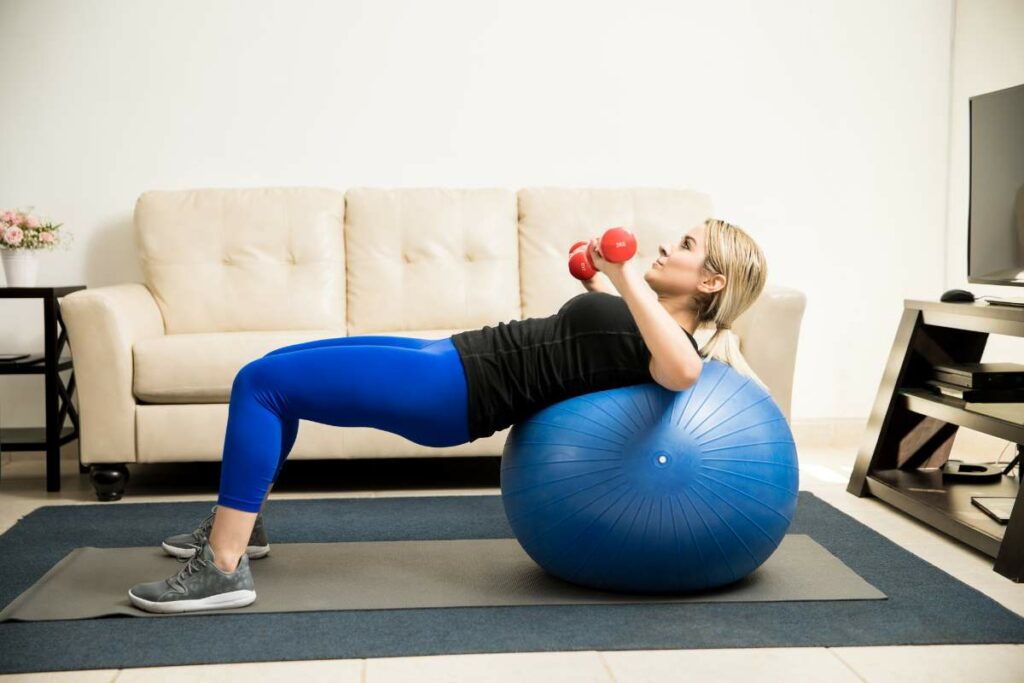
High-Impact Exercises: If you’re already physically active and looking for more of a challenge, high-impact exercises might be for you.
These include activities like running, skipping rope, or doing jumping jacks. They require your body to work against more force, which can lead to greater gains in bone density.
However, they are also more strenuous on your joints, so it’s important to build up to these gradually and always maintain proper form.
Low-Impact Exercises: These types of exercises are less taxing on your joints but can still do wonders for your bones.
Yoga and Pilates, for instance, involve movements that enhance balance, flexibility, and core strength – all of which are important for bone health.
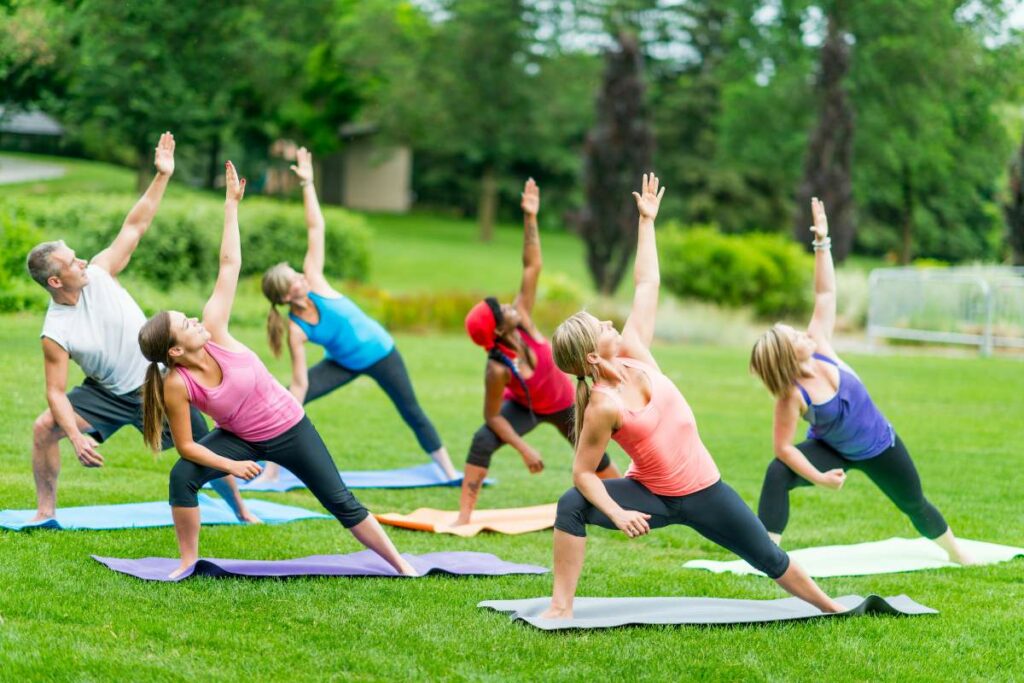
They also often include elements of resistance training and weight-bearing poses that can help to strengthen your bones.
Dancing: Whether you love Zumba, ballroom dancing, or just freestyling to your favorite tunes in your living room, dancing is a fantastic weight-bearing exercise.
It’s fun, gets your heart rate up, and works various muscle groups. Best of all, every twist, turn, and jump contributes to building stronger bones.
Remember, the best exercise for you is the one you enjoy and can stick with consistently. Try out a few different activities, mix and match, and see what works best for you.
Complementary Strategies for Enhancing Bone Health
While weight-bearing exercises are at the forefront of boosting bone health, they are only one piece of the puzzle.
Combining exercise with other healthy lifestyle habits can multiply the benefits and provide you with the best defense against bone-related diseases.
Nutrition: Proper nutrition is vital in maintaining and improving bone health. Certain nutrients play a starring role in this arena, particularly calcium and Vitamin D.

Calcium is the main building block of our bones, and Vitamin D is essential for the body to absorb calcium.
Incorporate foods rich in these nutrients into your diet. Think dairy products, green leafy vegetables, fish, and fortified foods.
If you struggle to get enough from your diet, discuss with your doctor whether a supplement might be beneficial.
Lifestyle Choices: Some habits can significantly undermine your bone health. Smoking, for example, interferes with the body’s ability to absorb calcium, leading to weaker bones.
Excessive alcohol, on the other hand, can disrupt the balance of calcium in the body and affect Vitamin D production, which helps to absorb calcium.
Cutting back on these habits, or better yet, eliminating them, can greatly contribute to maintaining strong and healthy bones.
Regular Check-ups: Regular medical check-ups, including bone density tests, are an integral part of a proactive approach to bone health.
These tests can help monitor your bone density over time and detect any early signs of bone loss.
The sooner you identify any issues, the sooner you can take steps to address them, which might include adjusting your exercise routine, diet, or lifestyle habits.
Stay Hydrated: Water plays a vital role in all bodily functions, including maintaining bone health.

Staying well-hydrated helps nutrients travel to the cells in our bodies, including those in our bones. It also helps eliminate toxins that can harm our bone health.
Rest and Recovery: While exercise is crucial for bone health, so is giving your body time to rest and recover. This allows your bones time to adapt to the stresses of exercise and build new bone tissue.
Ensure you’re getting a good night’s sleep and take rest days between intense workout sessions.
By incorporating these complementary strategies into your life, you can support your weight-bearing exercise routine and boost your bone health even further.
Every small change counts and contributes to your overall bone health. Start where you are, use what you have, and do what you can.
Empower Your Future: Bone Health and Weight-Bearing Exercises
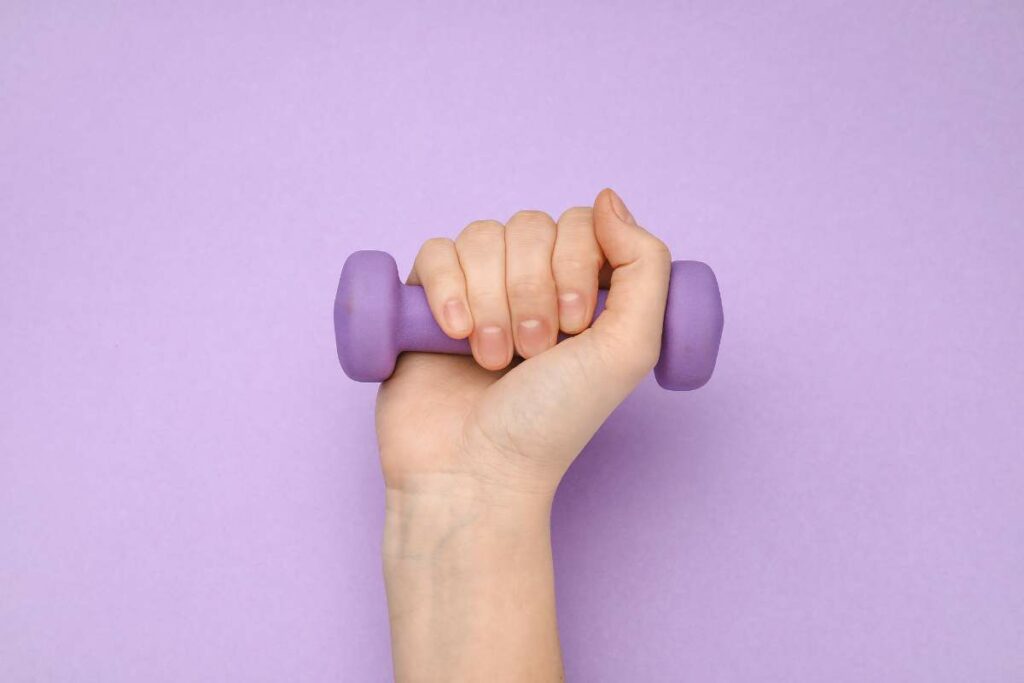
Your bones are the bedrock of your body, deserving all the care and attention you can provide. And weight-bearing exercises offer a brilliant, scientifically proven way to nurture them, ensuring they remain robust and healthy.
No matter where you are on your fitness journey, remember it’s never too late to start. Begin with small steps today, be patient, and consistently make strides towards better bone health.
The journey may be gradual, but the rewards are invaluable. Your future self will surely thank you for this incredible gift of health and strength!
